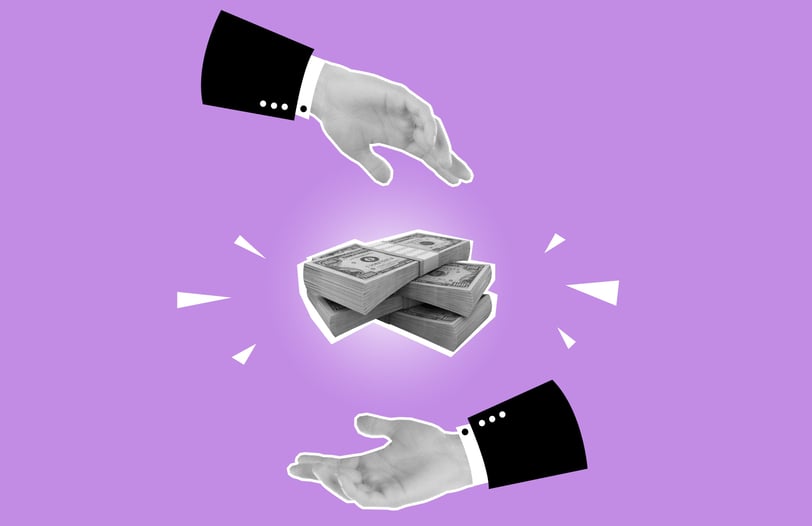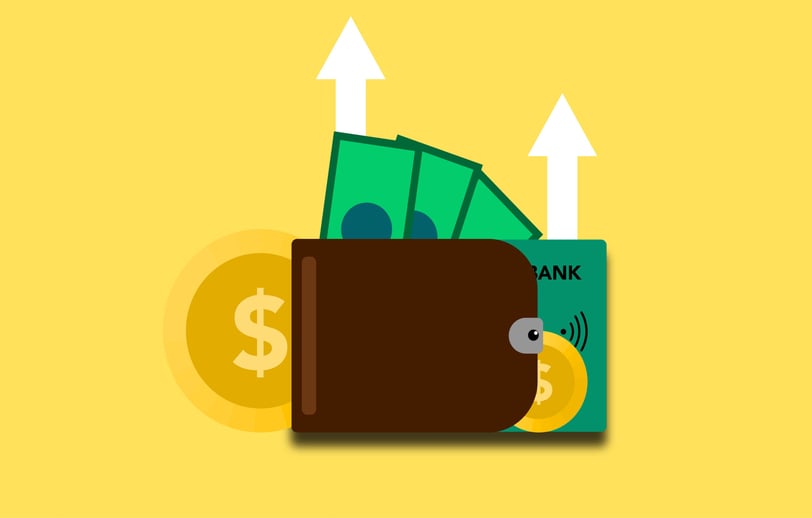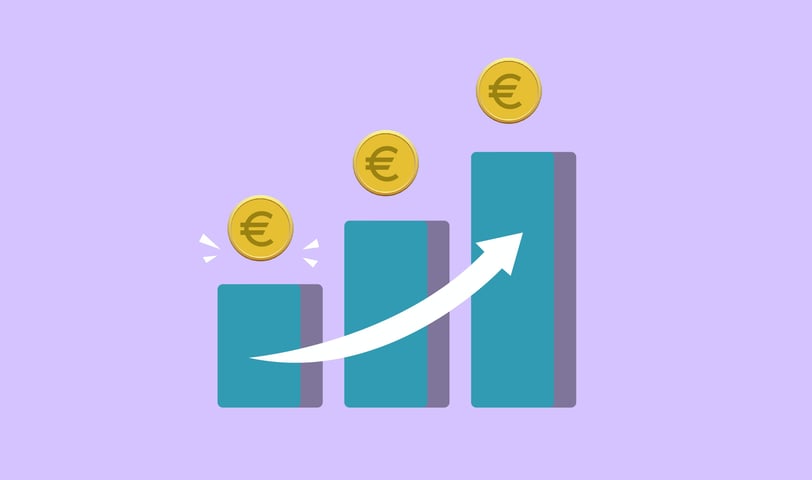
5 Essential Steps to Building a Solid Emergency Fund
Gull Rehman
2/7/20245 min read
Imagine this: your car sputters to a stop on a deserted road. The fridge hums ominously empty. A medical bill arrives, its total making your eyes water.
Life throws curveballs, and without preparation, these moments can turn into financial nightmares.
That's where your emergency fund comes in, a trusty shield against unexpected costs.
But building a strong one isn't magic – it's about smart planning.
So, grab your financial toolkit, because we're diving into 5 essential steps to build a rock-solid emergency fund:
Peace of Mind on a Budget: 5 Essential Steps to Building a Solid Emergency Fund
Think of your emergency fund like a castle wall. The stronger the wall, the better protected you are.
So, how big should your wall be? It depends on your unique situation.
Consider:
Your monthly expenses: Aim for 3-6 months of living expenses to cover unexpected costs like car repairs, medical bills, or job loss.
Your family size: More dependents might require a larger buffer.
Your income stability: If your income fluctuates, aim for a higher fund.
Once you have a target amount, write it down! Seeing it in black and white makes it more real and motivates you to reach it.
Pro Tip: Start small! Even $25 a week adds up over time. Celebrate every milestone, no matter how small, to stay motivated.


Step 1: Know Your Enemy – Size Up Your Needs
Think of your emergency fund as a suit of armor, protecting you from financial blows. But before you forge it, you need to know what size to make. Here's how:
List potential emergencies: Car repairs, medical bills, job loss – write down anything that could drain your wallet unexpectedly.
Estimate costs: Research average costs for each emergency on your list. Be realistic, but don't overthink it – aim for a ballpark figure.
Factor in lifestyle: Do you have dependents? Do you live in a high-cost area? Adjust your target based on your unique situation.
Rule of Thumb: Aim to save 3-6 months of living expenses. This gives you breathing room to handle most emergencies without panicking.
Step 2: Choose Your Weapon – Pick the Right Savings Account
Not all savings accounts are created equal. Here's what to look for in your emergency fund's home:
High liquidity: You need quick access to your money in an emergency. Choose an account with easy withdrawals, preferably linked to your debit card.
Low fees: Avoid accounts with monthly maintenance charges or excessive withdrawal fees. Every penny counts!
Interest (optional): While not crucial, some accounts offer small interest rates, giving your money a tiny boost.
Tip: Consider a high-yield savings account for potential interest earnings, but ensure easy access to your funds.


Step 3: Sharpen Your Skills – Start Small, Build Gradually
Building your emergency fund isn't about winning a sprint, but a marathon. Here's how to pace yourself:
Start small: Set a realistic monthly savings goal, even if it's just $25. Consistency is key!
Automate your savings: Set up automatic transfers from your checking account to your emergency fund. This "set it and forget it" approach makes saving effortless.
Find extra cash: Look for ways to earn more, like selling unused items or taking on a side hustle. Every bit helps!
Remember: Even small contributions add up over time. Focus on consistent saving, not immediate results.
Step 4: Defend Your Fort – Avoid Fund Dips
Your emergency fund is your safety net, so treat it like one! Here's how to keep it strong:
Only use for emergencies: Don't tap into your fund for unplanned purchases or vacations. Stick to true emergencies!
Track your progress: Regularly monitor your fund's balance and adjust your savings goals if needed.
Replenish after use: If you dip into your fund, make it a priority to replenish it as soon as possible.
Bonus Tip: Set up a separate savings goal for non-emergencies, like a vacation or new gadget. This helps prevent dipping into your emergency fund for non-essential expenses.
Step 5: Adapt and Evolve – Review and Adjust Your Strategy
Life changes, so your emergency fund needs to adapt too. Here's how to keep it relevant:
Review your needs annually: As your income or expenses change, reassess your target emergency fund size.
Adjust your savings goals: If your income increases, consider increasing your monthly contributions.
Seek professional advice: If you're unsure, consult a financial advisor for personalized guidance.
Remember: Building a strong emergency fund is an ongoing process, not a one-time event. Be flexible and adjust your strategy as needed.
By following these 5 steps, you can build a fortress of financial security. Remember, even small, consistent efforts can lead to a robust emergency fund, ready to shield you from life's unexpected storms. So, grab your financial tools and start building your own safety net today!
Bonus Step: Find Your Kryptonite (Unnecessary Spending)
Everyone has expenses that drain their wallet like kryptonite weakens Superman. Identify yours:
Daily treats: Coffee shop visits, fancy lunches, impulsive shopping sprees – add them up! Could you cut back?
Subscriptions you rarely use: Gym memberships, unused streaming services, forgotten magazine subscriptions – cancel them!
Impulse purchases: Do you often buy things you don't really need? Challenge yourself to wait 24 hours before buying non-essentials.
Every penny saved is a penny closer to your emergency fund fortress!


Celebrate Your Progress (And Keep Going!)
Building an emergency fund takes time and effort, so acknowledge your achievements! Track your progress, visualize your goals, and reward yourself for staying on track. Remember, every dollar saved is a step towards financial security and peace of mind.
Don't forget: Life happens, sometimes derailing your savings plan. That's okay! Adjust your goals as needed, keep saving consistently, and remember, even small steps lead to a strong and reliable emergency fund.
Here are some free tools that can help you create and manage your emergency fund:
Budgeting and Tracking:
Mint: https://mint.intuit.com/ Offers budgeting tools, transaction categorization, and goal setting, including emergency fund targets.
Personal Capital: https://home.personalcapital.com/ Provides a comprehensive view of your finances, including income, expenses, and net worth. You can also track your emergency fund progress.
YNAB (You Need a Budget): https://www.ynab.com/ Uses a unique envelope system to help you allocate your income and prioritize saving for your emergency fund.
Google Sheets/Excel: Free spreadsheets offer basic budgeting and tracking functionality, allowing you to manually manage your finances and monitor your emergency fund progress.
Savings Accounts:
High-yield savings accounts: Many online banks offer higher interest rates than traditional banks, helping your emergency fund grow faster. Look for accounts with no fees or minimum balances.
Micro-savings apps: Apps like Qapital, Acorns, and Digit round up your spare change and automatically invest it in your emergency fund.
Cashback apps: Apps like Rakuten and Ibotta offer cashback on your purchases, which you can then transfer to your emergency fund.
Other Resources:
National Endowment for Financial Education (NEFE): https://www.nefe.org/ Provides free financial education resources and tools, including information on building an emergency fund.
Consumer Financial Protection Bureau (CFPB): https://www.consumerfinance.gov/ Offers resources on creating a budget, saving money, and avoiding financial scams.
Remember: The best tool for you will depend on your individual needs and preferences. Consider factors like your desired features, ease of use, and security when choosing a tool.
Disclaimer: This blog post is for informational purposes only and should not be considered financial advice. Please consult with a qualified financial advisor for personalized guidance.



